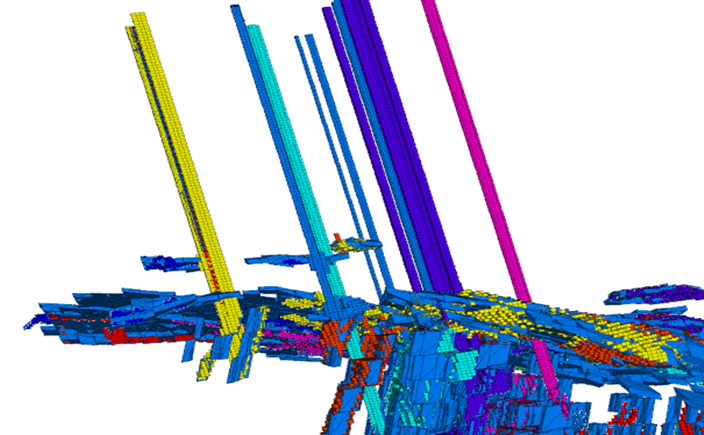StopeX works best when the input geometries comprise mesh objects in ‘.stl’ format. Even so, erroneous input files can result in unusual looking octree meshes. This post provides useful RhinoCAD commands for repairing input geometries.
_- ShrinkWrap creates a simplified mesh around the target object
_- MeshRepair launches a UI for checking and repairing mesh
_- ExtractMeshFaces can be used to remove problematic areas of mesh
_- RebuildMesh recalculates face and vertex normals
_- ExtractDuplicateMeshFaces selects duplicate areas of mesh
_- CullDegenerateMeshFaces removes and repairs areas of mesh with invalid vertices
_- UnifyMeshNormals applies a consistent normal direction for all mesh faces
_- ReduceMesh simplifies mesh by decreasing polygon mesh face count
In most cases, the _ShrinkWrap and _ReduceMesh command will be sufficient for preparing input geometries.
